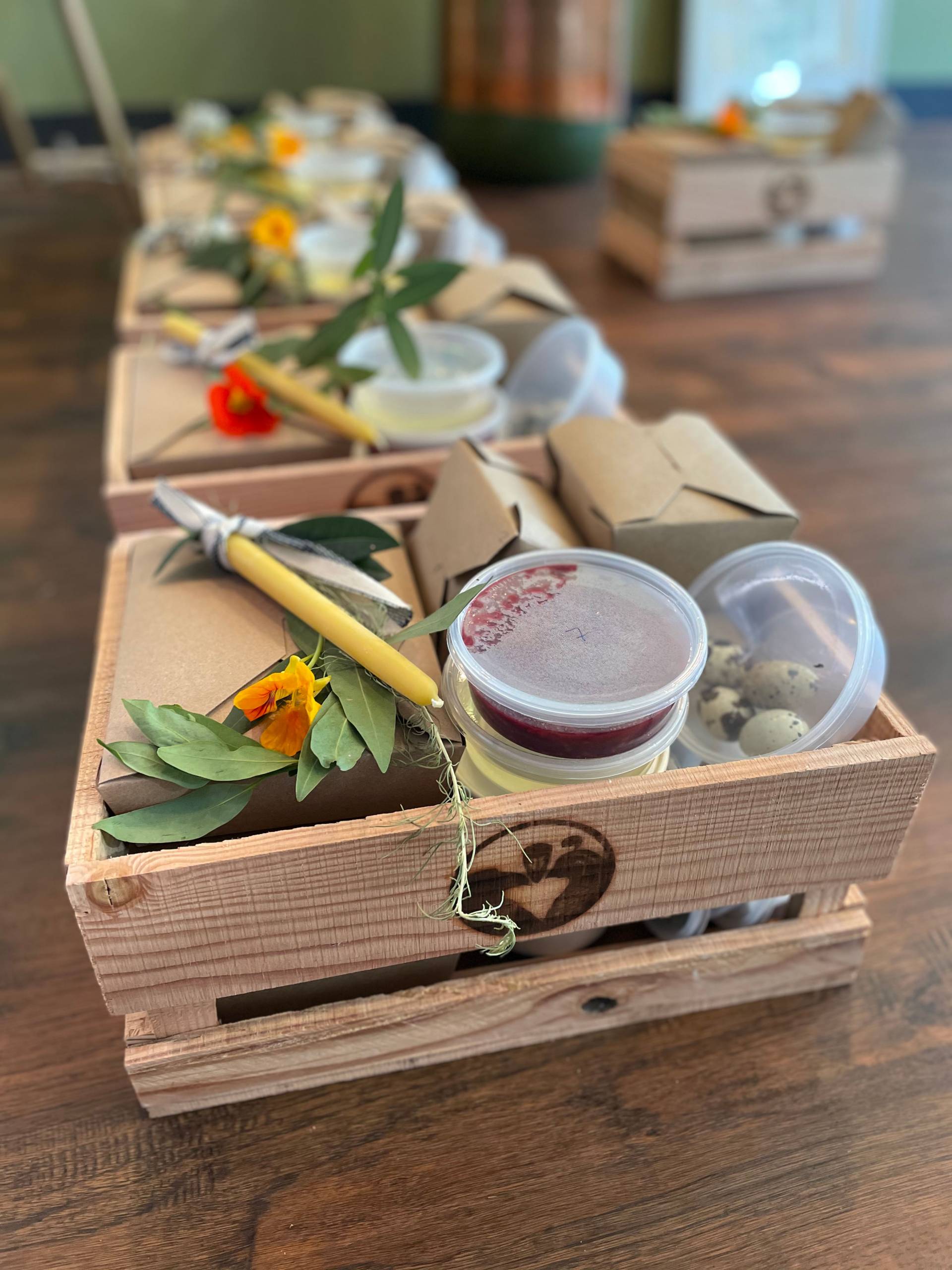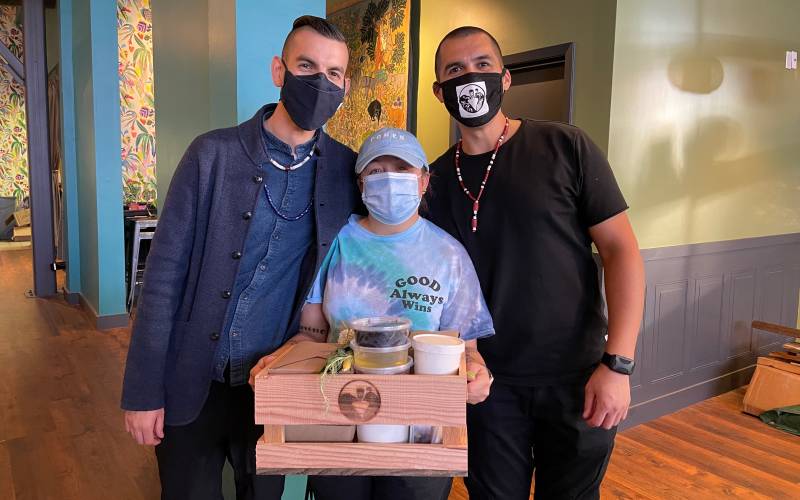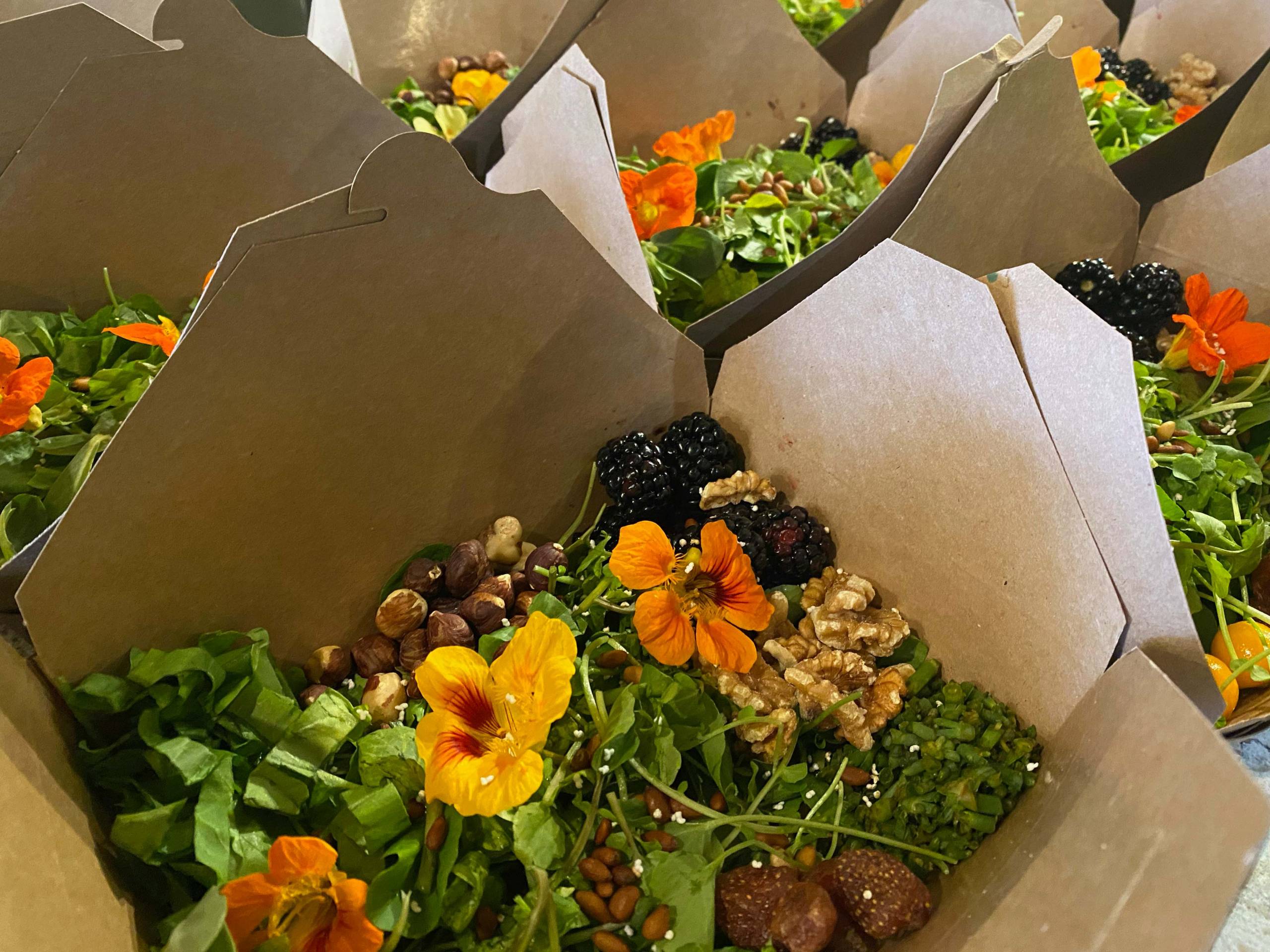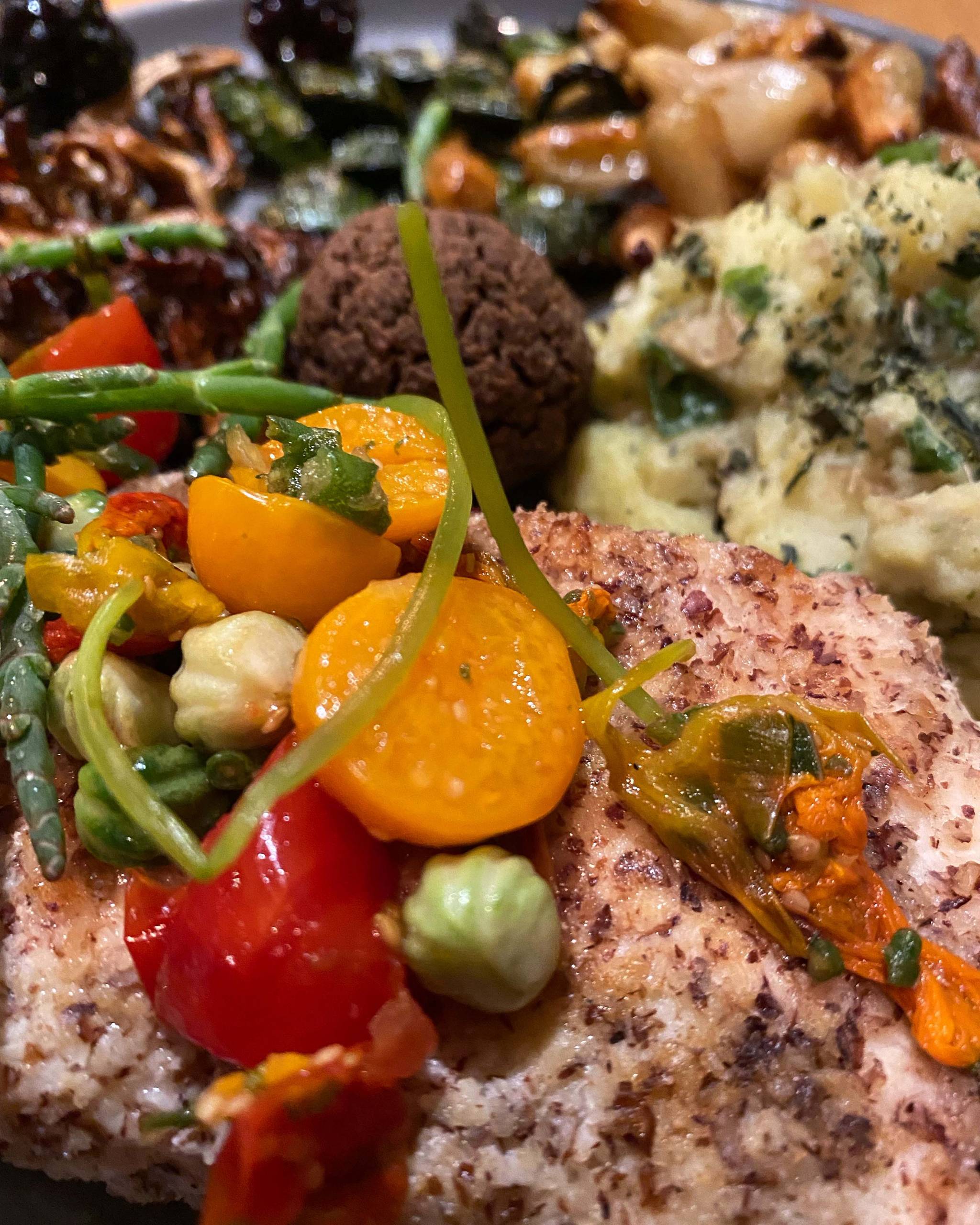W
hen Cafe Ohlone shut its doors last summer, its owners promised they would be back before long. Now, a year later, the world’s only Ohlone restaurant is gearing up for a triumphant return: Owners Vincent Medina and Louis Trevino announced earlier this month that the restaurant will reopen in Berkeley this November.
The new, larger incarnation of the restaurant will be located in the outdoor courtyard of UC Berkeley’s Hearst Museum of Anthropology. It will continue to serve the pre-colonial dishes the original Cafe Ohlone was known for—the kind you’d be hard-pressed to find anywhere else in the Bay Area, like venison meatballs, chia seed bread and cold, luxuriously silky acorn soup. What will be new, however, is the introduction of dishes that evoke more recent periods in Ohlone history. And, perhaps most significantly, Medina and Trevino hope the courtyard restaurant will usher in a new era of cooperation with an institution that has, historically, inflicted great pain on the Ohlone people—including thousands of ancestral remains and sacred objects that the Hearst Museum has not yet returned to the Ohlone people.
“We have a very complex and not necessarily positive history, up until recently, with the Hearst,” Medina says. “They want to do the right thing, but they need to know how to do the right thing.”
A Painful History
The plan to bring Cafe Ohlone to the Hearst came about fairly quickly. The restaurant had been on indefinite hiatus when University Press Books, whose back patio it occupied, closed—a casualty of COVID-related financial pressures. Left without a home, the nationally acclaimed restaurant was forced to end its two-year run of perennially sold-out ticketed dinners, transitioning instead to a monthly meal kit takeout program that it has run for the past several months out of a commissary kitchen in Old Oakland. As Medina and Trevino looked for a new permanent home for the restaurant, they initially concentrated their search in the San Lorenzo area, where many of the East Bay Ohlones live.

Then, Kent Lightfoot, an anthropology professor at UC Berkeley, suggested the Hearst as a possible destination for the restaurant—a possibility that, as Medina explains, felt extremely fraught. Alfred Kroeber, the museum’s longtime director from 1908 to 1946 (back when it was called the University of California Museum of Anthropology), had a direct hand in causing the Ohlones to lose federal recognition when his 1925 Handbook of the Indians of California declared them to be “culturally extinct.” Phoebe Hearst, the museum’s current namesake, lived in a mansion that she built on Ohlone land in the Amador Valley, near Pleasanton—right on the other side of the river where Medina’s great-grandparents’ generation lived in one-room shacks. “The Hearst family got richer and richer as our family was disenfranchised,” Medina says.




